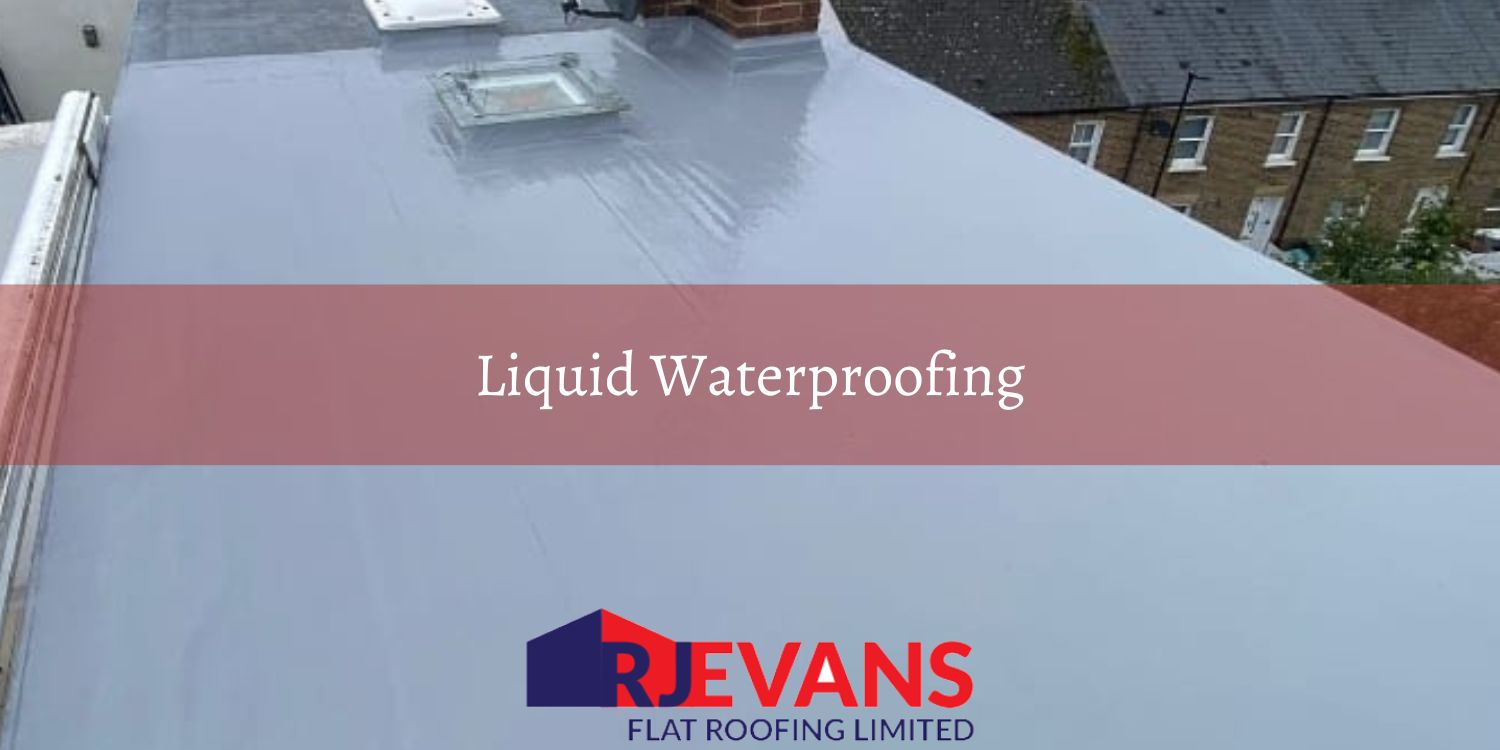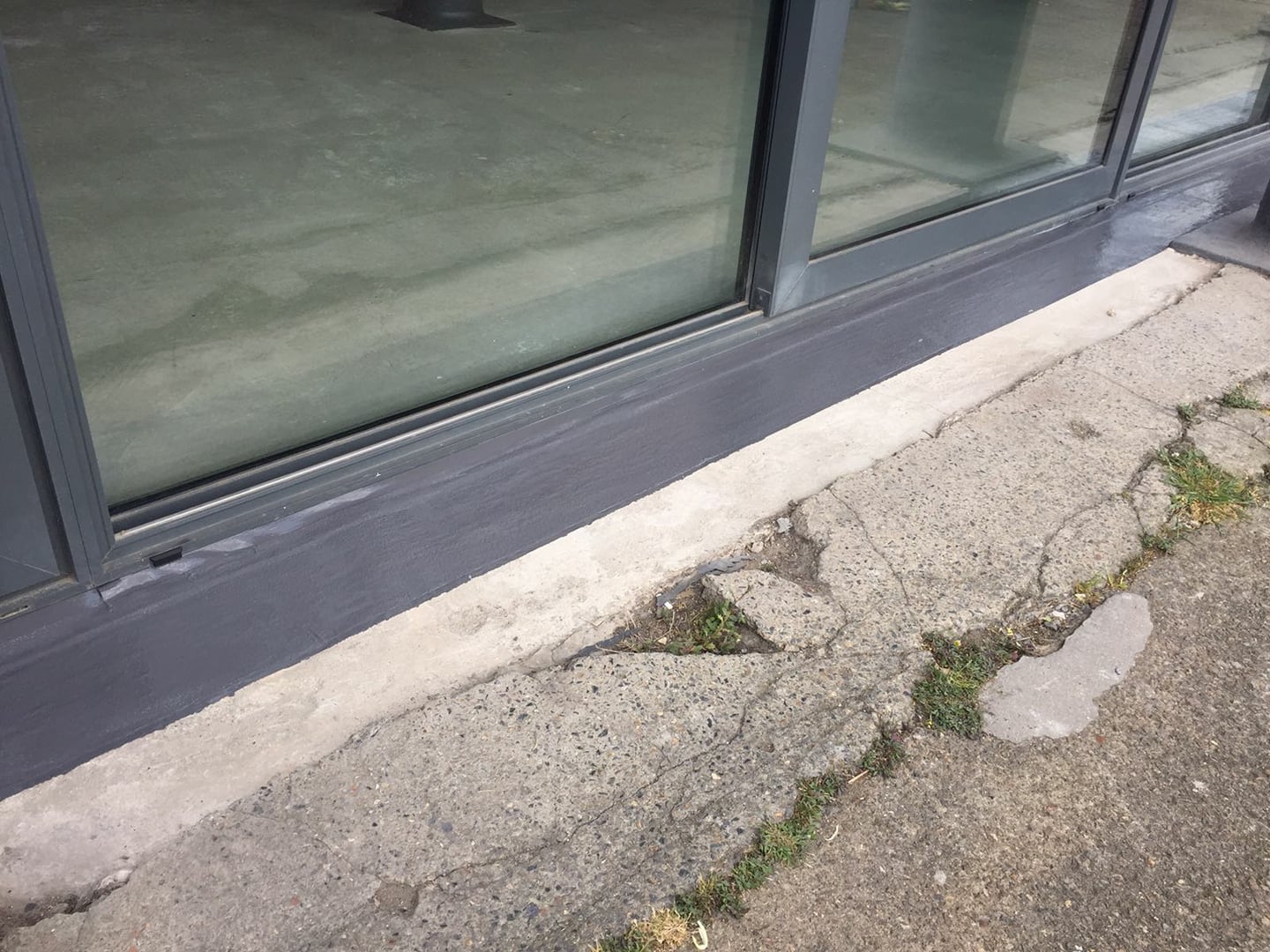I agree Our site saves small pieces of text information (cookies) on your device in order to deliver better content and for statistical purposes. You can disable the usage of cookies by changing the settings of your browser. By browsing our website without changing the browser settings you grant us permission to store that information on your device.

Liquid waterproofing is a technique in construction where a liquid coating is applied to surfaces to create a seamless and impermeable barrier against water intrusion. The surfaces where liquid waterproofing is typically applied are; flat roofs, walls and foundations. Liquid applied waterproofing is frequently used to protect structures from moisture-related damage and to enhance their weather resistance. Liquid waterproofing products come in various formulations. They can be bitumen, acrylic, polyurethane, or silicon based. These products are typically applied using spray, brush, or roller methods. When these liquid products cure they form a durable and waterproof membrane. Liquid waterproofing is attractive to many contractors due to its versatility, ease of application and long lifespan. for preventing water leaks, dampness, and potential structural deterioration.
RJ Evans provide a full range of liquid waterproofing services. This includes liquid waterproofing for flat roofing, balconies, steps, walkways and much more. Our highly-experienced team covers all of London, Essex and the South of England, and are fully accredited liquid waterproofing specialists. If you would like us to provide a quotation or any information about liquid waterproofing please get in touch with us via our contact form or call us now on 01277 375 511.

Liquid waterproofing is a method involving the application of a liquid membrane to surfaces such as roofs, foundations, or walls to form a seamless, water-resistant barrier. Once applied, the liquid cures and forms a durable, flexible coating that shields the surface from water ingress and environmental damage. Common materials used in liquid waterproofing include polyurethane, acrylic, and bitumen-based products, all of which provide excellent resistance to UV rays, weathering, and standing water. This approach is particularly effective for flat roofs and areas with complex shapes or details, as the liquid can be moulded to fit irregular surfaces.
One of the primary advantages of liquid waterproofing is its seamless application, which minimises the risk of leaks at weak points like joints or seams. Additionally, it is adaptable to various substrates, including concrete, metal, and wood, making it suitable for a wide range of building types. According to the Building Research Establishment (BRE), liquid waterproofing systems, when applied correctly, can last up to 25 years with minimal upkeep. This makes them a cost-effective solution, extending the lifespan of existing structures without the need for significant repairs. Liquid waterproofing is widely used for its durability, versatility, and ability to provide long-term protection against water damage.
Cold applied liquid waterproofing is a method of waterproofing where a liquid membrane is applied without the need for heat or flames. Once applied, the liquid cures to form a seamless, durable barrier that protects surfaces like roofs and foundations from water ingress. It is particularly useful for flat roofs and areas with complex details, as the liquid can mould to any shape, providing effective waterproofing. This technique is also safer than traditional methods, as it eliminates the need for hot works during application.
Liquid membrane waterproofing is a technique where a liquid coating is applied to a surface, creating a seamless, flexible barrier that protects against water ingress. Once the liquid cures, it forms a durable, waterproof membrane suitable for various surfaces, including roofs, foundations, and walls. This method is particularly effective for complex or irregular surfaces, as the liquid can easily conform to different shapes. It offers excellent resistance to weathering, UV rays, and standing water.
To Repair and Refurbish Roofs
If your roof is entering the final stages of its life, liquid waterproofing can be used to refurbish it. It is a seamless application which is able to bond fully to a range of substrates, including ply membranes, fibre cement and profiled metal.
It is also a great option to use to repair an existing roof which has been damaged, when the current roofing material has deteriorated or is not adequate. For example, if the roof’s current membrane is not working the decision to apply a liquid waterproofing overlay can be cost effective. Particularly as the way in which it bonds to the original substrate makes it highly reliable.
Another added bonus of using liquid waterproofing to repair or refurbish a current roof is it doesn’t require electricity. So there is no need to worry about how to get electricity to the rooftop and noisy generators and cabling is not required.
On Complex Roofs and New Builds
Cold applied liquid waterproofing is a great option for more complex roofs and new builds. It is easy to manipulate and so can be used on roofs with intricate detailing, edging which has detail, terminations and penetrations, as well as upstands. The fluidity of liquid waterproofing means even roofs with added details can achieve a professional finish.
On Inverted Roofs
An inverted roofing system is where the membrane is applied underneath the insulation and ballast, liquid waterproofing is a useful option to use under these circumstances. Liquid roofing systems which have root resistant properties are a great choice for green roofs.
Pitched and Flat Roof Systems
Cold applied liquids can be applied to roofs with a pitch of more than 15 degrees. Unlike many other systems liquid can also be applied to roofs with a pitch of less than 5 degrees. This is also all applied completely flame free, and can be used on both a new or existing roof. The elimination of hot works from waterproofing has made cold applied liquid the fastest growing waterproofing solutions in the world.
Industrial Roof And Gutter Repair
Liquid waterproofing can be used to provide cut edge corrosion treatment to provide warehouse roof repair, factory roof repair and to provide an anti-corrosion gutter coating. In most circumstances this will add significant time to the life expectancy of the roofing system.
Asbestos Encapsulation
Liquid is a great solution for the encapsulation of asbestos roofs. A fast curing liquid system will create a protective layer which will prevent the release of asbestos fibres and stop water ingress. It will also reduce the growth of vegetation and avoid the disruption of a full asbestos removal. When completed the life expectancy of an asbestos encapsulation is around 25 years which is backed up with a full warranty. An underestimated benefit of using a liquid applied system for asbestos encapsulation is how it is an aesthetically pleasing finish which will make the roof look brand new again.
There are many advantages of using liquid waterproofing system for a flat roof. Firstly the procedure of applying liquid waterproofing is one which requires no flame as part of the installation process. Instead it is a cold applied liquid waterproofing which means not only does it poses less healthy and safety risks to those applying the waterproofing, but it also means minimal disruption to the property and its occupants during the liquid waterproofing process.
Secondly, it is a system which can be applied throughout the year so long as the temperature remains above zero degrees. This means liquid waterproofing can be carried out during the winter period as well as other months of the year.
Furthermore, liquid waterproofing membrane is highly durable and should repair work be needed it is an easy process to undertake. In case of local damage the installers will only need to repair the specific area. This means once the affected area has a liquid overlay it will make the existing roof waterproof again. obviously this is far better than having to remove a large section or even all of the roof. This is why liquid roofing systems are cost effective. In addition to this, the method of applying the waterproofing without flames minimising the disruption of any repair work - making it particularly advantageous to those who own commercial properties.
The lifeline of flat roofs is impressive with many flat roofs which have undergone waterproofing treatments boasting a lifetime stemming over 25 years.
The malleable nature of liquid waterproofing along with its elasticity means it copes well with the natural movements which flat roofs endure throughout the year. This means in a correctly installed waterproofed system the likelihood of cracks or splits occurring across the flat roofs surface is greatly reduced.
The fast curing nature of the waterproofing application means the flat roof is waterproof instantly or at the very most 2 hours following the process (the timeframe can be lengthened should the roof be subjected to any abnormal temperatures).
The flexibility of the waterproofing process is an additional benefit as it can be applied event to roofs with complex detailing. The liquid membrane is easy to shape and direct, making it possible to fit into tight spaces and fill any tricky areas. The unique factor of it being a liquid membrane (meaning it is easier to manipulate) really makes it stand out when compared to other forms of roofing membranes.
Lastly, the fact this liquid waterproofing system is vapour permeable (which means it allows moisture to pass through it) is another great benefit. This is because it prevents any ventilation problems, as any moisture trapped inside the building is able to pass through the roof and ‘escape’ and helps prevent damp from forming.
• It can be applied on almost any substrate.
• Ideal for complex detailing. Liquid systems are ideal for waterproofing hard to reach places.
• Liquid waterproofing systems can be used all year round (if the temperature remains above zero degrees).
• Completely seamless finish.
• Can be applied with a brush, roller or machine (on large projects).
• Minimal disruption during the installation process.
• Most waterproofing systems have zero toxicity.
• Is suitable to be applied on areas with heavy foot traffic. This is achieved with the addition of a heavy-duty traction coating.
• Highly flexible which allows them to withstand a lot of movement.
• Excellent Tensile Strength
• Long Life Expectancy With Guarantees of 25 years Available
A liquid system which is based on elastomeric hydrophobic polyurethane resin technology is the best choice of liquid waterproofing product. This ensures it will have excellent mechanical, chemical, thermal and ultraviolet resistance. This means the liquid waterproofing will perform in all conditions.
Such a liquid waterproofing product can be brush, roller, or spray applied. Once installed it forms a seamless membrane. A liquid product such as Starflex Mono is ideal due to it being resistant to water, frost, and root penetration. It can be used for both blue and green roof waterproofing
Crack-bridging is up to 2mm, even at -10 °C. It is a water permeable membrane, so the surface can breathe. A waterproofing product like this is suitable for virtually all likely substrates, including bitumen felt, GRP, asphalt, single ply, timber, metal, acrylic coatings, EPDM, TPO and concrete substrates. It can also be applied without a primer in some situations.
We believe a product like Starflex Mono is the best out of all the liquid membranes on the market and is ideal to use for flat roof construction and repairs. In both a commercial and domestic liquid waterproofing.
• Range of Waterproofing Systems
• Vastly experienced waterproofing team. We have operatives with more than 40 years’ experience.
• We provide a range of FREE quotations and solutions for all projects.
• Insurance backed Guarantees.
• Excellent Customer Support throughout project.
• Rated 5 out of 5 from our previous customers.
If you would like a quotation or any help choosing the correct liquid waterproofing system for your project please get in touch with us or call us now on 01277 375 511. One of our liquid waterproofing specialists will be delighted to help you.
.